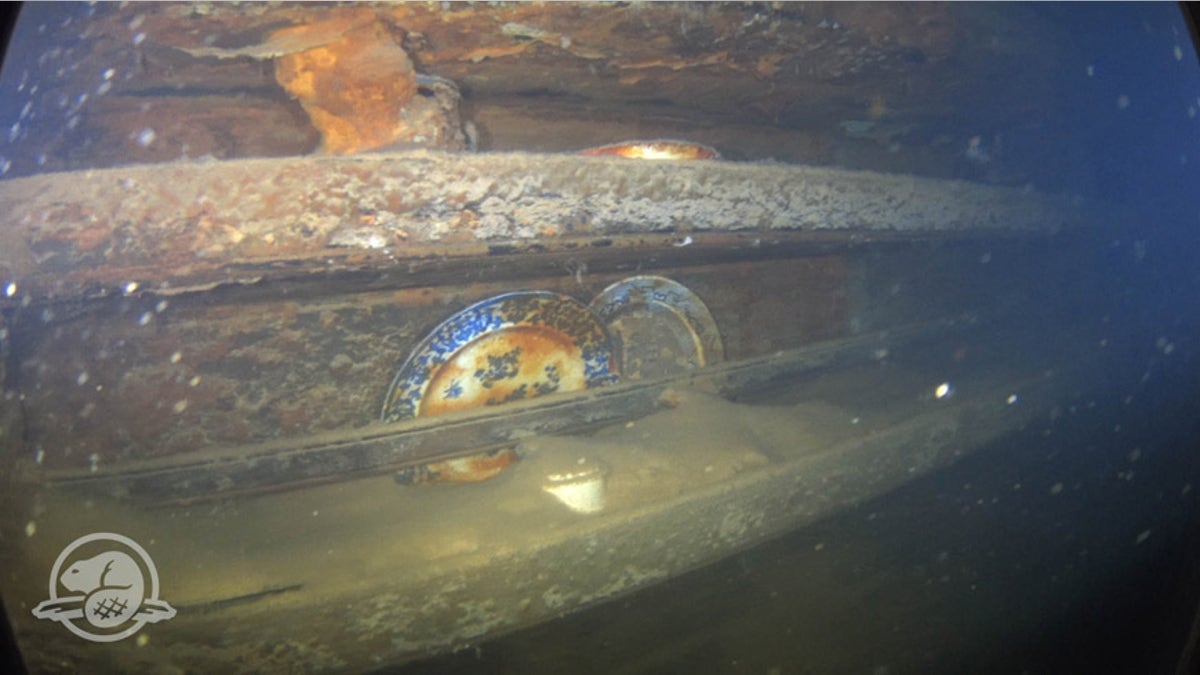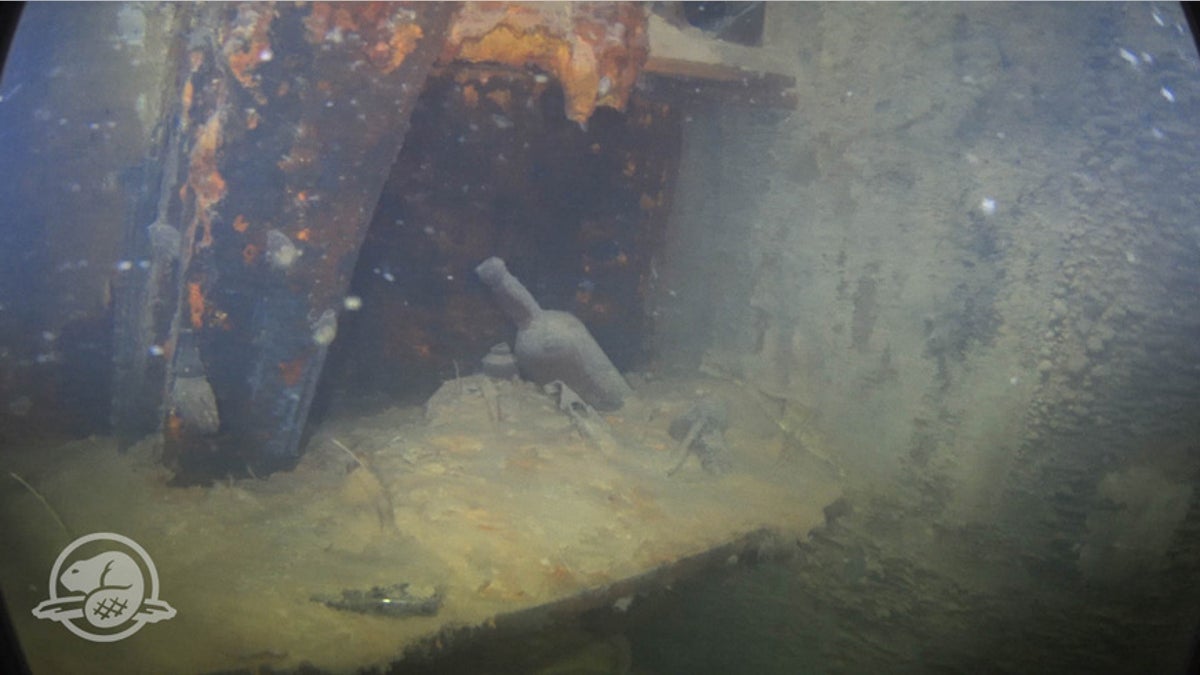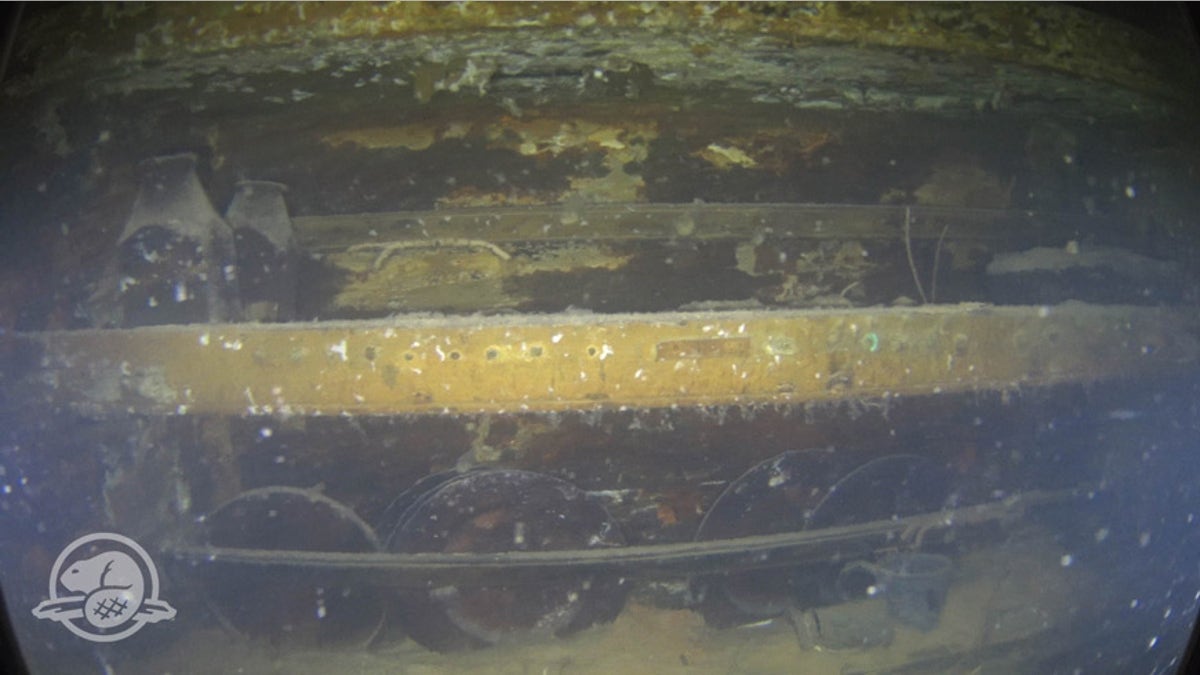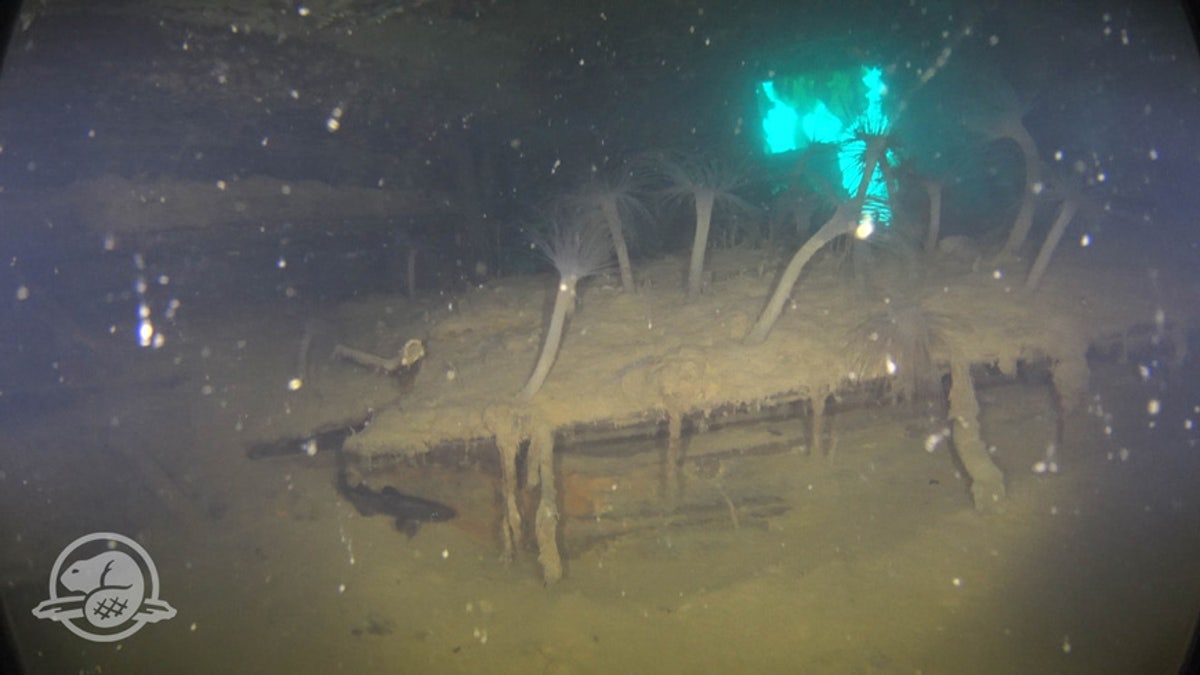Long-lost HMS Terror finally discovered
Researchers discover long-lost HMS Terror 168-years after Sir John Franklin's doomed ship wrecked
The Canadian government has released incredible images of the shipwreck of HMS Terror, the Royal Navy warship that was part of a doomed 1845 Arctic mission to locate the Northwest Passage.
HMS Terror and HMS Erebus took part in an expedition led by Sir John Franklin to find the long-sought sea route. Both ships’ crews perished in mission and the ships' final resting places remained a mystery for over 160 years.
The wreck of the Erebus was finally located in 2014, amid much fanfare, and the Terror was found two years later. The ships, which were among the most sought-after prizes in marine archaeology, are the subject of multiple songs, poems and novels. The wrecks have even sparked talk of a modern "curse."
DOOMED 1840S ARCTIC EXPEDITION SPARKED TALK OF A MODERN 'CURSE'
Canadian officials have released stunning, never-before-seen images and video footage of the HMS Terror wreck. The images were captured during what is described as the largest and most complex underwater archaeology project in the country’s history. Using an undersea drone, researchers explored the remarkably well-preserved interior of the HMS Terror.

A bunk, drawers and shelf in a cabin on HMS Terror’s lower deck. (Parks Canada, Underwater Archaeology Team)
“With a water temperature of 0 degrees Celsius or lower and an internal environment with no natural light, artifacts have been essentially frozen-in-time for approximately 170 years,” explained Parks Canada, in a statement. Officials are even confident that they will find written documents on the wreck.
Archaeologists explored HMS Terror’s officers’ cabins, where beds and desks were still in place. Plates and glass bottles were spotted on shelves in what is believed to have been the officers’ mess pantry, as well as plates, bowls and glasses in a part of the ship that was occupied by HMS Terror’s sailors.
CANADA SAYS 1 OF THE LOST SHIPS FROM DOOMED 1840S BRITISH ARCTIC EXPEDITION IS FOUND
“The Captain's cabin is the best preserved space of the entire lower deck,” explained Parks Canada in the statement. “Parks Canada’s Underwater Archaeology Team discovered that a significant amount of sediment has seeped through the stern gallery windows, covering a good portion of the artifacts and likely preserving what lies beneath. The Captain’s desk, map cabinets with drawers closed, boxes that most likely contain scientific instruments, a complete tripod (similar to a surveyor’s tripod) and a pair of thermometers were identified.”

Plates and other artifacts on shelves next to a mess table where lower ranking crew members of HMS Terror would have taken their meals. (Parks Canada, Underwater Archaeology Team)
Officials noted that the only part of the ship’s lower deck that remains inaccessible is the captain’s sleeping quarters, which is behind a closed door.
“Over seven days, under exceptional weather conditions, the interior spaces of the wreck of HMS Terror were scientifically and systematically explored for the first time,” explained Parks Canada, in a separate statement. “Parks Canada’s Underwater Archaeology Team conducted seven ROV [Remotely Operated Vehicle] dives and explored 20 cabins/compartments on the ship.”
SEARCHERS FIND 2ND SHIP FROM DOOMED BRITISH EXPEDITION
What happened to most of the ships' crew members, however, is still unknown. Franklin and 128 handpicked officers and men had set out in 1845 to find the Northwest Passage, the shortcut to Asia that supposedly ran from the Atlantic to the Pacific by way of the harsh, ice-choked Arctic.

Bottles and other artifacts on a shelf in a cabin on HMS Terror’s lower deck. (Parks Canada, Underwater Archaeology Team)
Experts believe that the ships were lost in 1848 after they became locked in the ice near King William Island and that the crews abandoned them in a hopeless bid to reach safety. Inuit lore tells of "white men who were starving" as late as the winter of 1850 on Royal Geographical Society Island in the north Canadian territory of Nunavut.
The fate of the sailors and Royal Marines on the Franklin expedition continues to captivate historians.
ENTIRE ARCTIC EXPEDITION PERISHED, BUT NOT BECAUSE OF LEAD
The ships’ crews all perished in the icy wastes of the Canadian Arctic and the bodies of most of the expedition members have never been recovered. However, a handful of graves have been found and the remains examined.

Plates, bottles and other shelves caught on camera by an undersea drone. (Parks Canada, Underwater Archaeology Team)
One theory suggests that lead poisoning from shoddily canned food and the ships’ water filtration system helped doom the expedition. However, research published last year in the journal Plos One challenges this notion. After analyzing bone and dental remains of crew members and comparing them to samples from a Royal Navy cemetery in the Caribbean, the researchers concluded that many of the crew were likely victims of starvation.
Parks Canada worked with the local Inuit community to explore the wreck.
WORLD'S LARGEST SHIPPING COMPANY HEADS TO ARCTIC AS CLIMATE CHANGE MAY OPEN UP NEW ROUTES
“Today, the mysteries of the Franklin Expedition are being revealed in new and fascinating ways,” said Catherine McKenna, Minister of Environment and Climate Change and Minister responsible for Parks Canada, in the statement. “These images from HMS Terror will capture the imagination of all Canadians.”

A storage compartment in Captain Crozier’s cabin on HMS Terror, partly covered by silt and sea anemones, with one of the cabin’s stern gallery windows clearly visible in the background. (Parks Canada, Underwater Archaeology Team)
“As joint owners of the artifacts, we share Parks Canada’s excitement over the amazing potential to unlock more of this mystery which, combined with Inuit traditional knowledge, will help paint a more complete story of the Franklin Expedition and its fate,” said Pamela Gross, president of the Inuit Heritage Trust.
Inspired by similar initiatives at other Parks Canada locations, a Guardian program has been set up at the wreck locations that involve Inuit in the protection and monitoring of the HMS Erebus and HMS Terror sites.
The local community treats the wreck sites with great reverence.
CLICK HERE TO GET THE FOX NEWS APP
Both wrecks have been designated as historic sites by the Canadian government and a Parks Canada permit is required to access them.
The Associated Press contributed to this article.
Follow James Rogers on Twitter @jamesjrogers





















